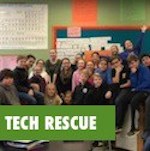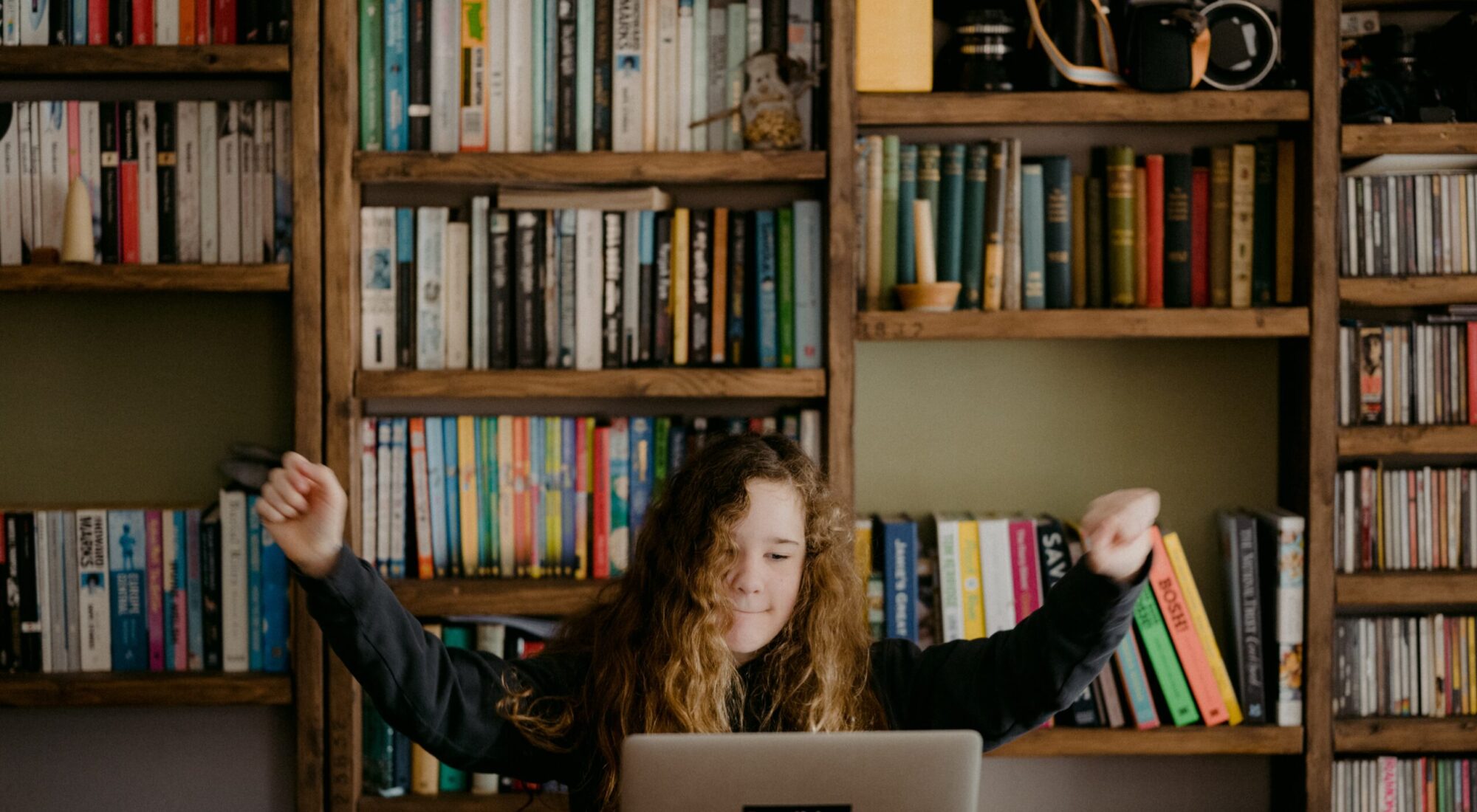
This week on the podcast: Rachel Mark traveled to The Dorset School, in Southern Vermont, to talk with educator Mandy Thomas and her 6th grade students, about how their move to student-led conferences started with screencasting.
Transcript below.
Not everyone is a fan of public speaking. Especially when the topic is… yourself.
Even more so when your audience consists solely of your teacher and your parents.
Now imagine doing it as a middle-schooler.
On this episode of The 21st Century Classroom, we talk student-led conferences.
They’re part of implementing legislative Act 77 in Vermont (.pdf), in which every student in grades 7 thru 12 creates a Personal Learning Plan, or PLP. Ideally, student-led conferences shift the agency in that conference from the teacher to the student, and put the student in the driver’s seat for describing their PLP. But how can middle grades students give their parents an accurate portrayal of who they are and what they want to learn if they have to do it in a school setting, in front of their teacher?
Educator Rachel Mark traveled to The Dorset School, in Dorset, Vermont, to talk to students there who took part in student-led conferences with the aid of screencasts they made, talking about their learning.
How did screencasts find their way into student-led conferences?
Dorset educator Mandy Thomas explains.
Mandy Thomas: So I put it out to my students last year and I said, um, I wanna make PLPs more fun, more exciting, how can we do that? Because we just had the template online in their e-portfolio and they would go online and just type a couple sentences. So we talked about how could we upload pictures or videos to really show your growth! And we talked about how a picture is worth a thousand words, and I told them I don’t think a Google Presentation is enough, how could we record our voice to that?
And one of my students had used Screencast-o-matic.com so he got on my computer and showed me, showed the whole class, and said this would be great. And everyone was like “Yeah! Let’s try it!”
So they just went to work building their Google Slides, uploading evidence and then we took turns using a big speaker and recording their voice to it. They practiced; they would take notes in the Slides and print them out so they had them in front of them, but yeah we just kind of had a conversation together to generate ideas. What can we do to make this more engaging.
Rachel Mark: Do you think because a student came up with the idea, your students were more into the idea?
Thomas: I think there was more buy-in, they were much more invested that way.
But how did students feel once they sat down to do screencasts themselves?
Student 1: We think it was kind of cool because we had never done the screencast before on our PLPs so it was really new and exciting
Rachel: What was exciting about making a screencast?
Student 2: you weren’t as nervous
Student 3: I liked them because at your parent conferences you didn’t have to talk in front of your parents, and like, you um, you didn’t have to remember everything and if you messed up your screencast you could do it again.
Student 1: I like it better than writing it out because when you write it out it’s hard to get all your thoughts out, it’s hard to type but when you’re saying it you can go out and say it!
Rachel: Did the audio reflection help you get more of your ideas out?
Student 1: Yeah.

Another benefit of recording a screencast showing your progress as a learner is that, well, then you have a record of what you’ve accomplished. And it sure beats an awkward family photo in the holiday letter.
Student 1: When you’re screencasting it’s easier because you can share it with other people too and you don’t have to present it again, they can just listen to it. It’s easy if you want to share it with other people and if your teacher wants to share it with other people.
Rachel: Did you do that? Did you share yours with other people?
Student 1: Yeah, we put it on our e-portfolios, so that our parents could look at it or something–
Rachel: When you do your student-led conference how does screencasting help you?
Student 4: It helped because if your parents had a question on one of the slides you could always go back and like tell them why it happened.
But could the use of screencasting technology encourage other skills as well?
Student 5: you kind of have to speak clearly and loudly and you have to sound enthusiastic and not dull and flat.
Student 6: I know when my screencast came out last year you could barely hear me so you have to TALK REALLY LOUD.
And maybe that, after all, is the key to a successful student-led conference: no matter whether you use technology or not, make sure your parents hear you.


Screencasting for a student-led conference https://t.co/GWBmCuo3Uz
Screencasting for a student-led conference https://t.co/AhumIbJACm
Fantastic idea – no surprise that it came from a student! — Screencasting for a student-led conference https://t.co/apr9AtkxJa
RT @innovativeEd: Screencasting for a student-led conference https://t.co/GWBmCuo3Uz